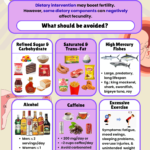Food is among our basic necessities of life. These days, globalization and advancement of technologies allow for better access to various food products, food processing methods and marketing. In turn, there has been a shift of diet from the traditionally high complex carbohydrate and fiber to a more varied diet with higher sugar, fat and saturated fat proportion. This change contributes to the obesity epidemic. Obesity, defined as excessive fat accumulation that can impair health, has been on the rise for the past decade, with one out of eight people living with the disease in 2022 according to the World Health Organization. This is worrisome as the disease can increase the likelihood of other non-communicable diseases including diabetes mellitus, hypertension, heart, and vessel diseases. It is already widely known that the risk of obesity can be affected by contributing factors such as underlying medical conditions, genetics, stress level, obesogenic environment, and medication. However, the main cause remains, that is energy imbalance, in which energy intake from food exceeds the energy output from exercise and physiological functions such as breathing, digestion et cetera. To combat obesity, changes in dietary intake and lifestyle should be implemented.
食物是我们基本的生活必需品之一。如今,全球化和技术进步使我们能更好地获取各种食品、食品加工方法和营销策略。因此,饮食习惯也发生了变化,从传统的高复杂碳水化合物和纤维饮食,转向更多样化的饮食,其中糖、脂肪和饱和脂肪的比例更高。这种变化导致了肥胖流行病的出现。根据世界卫生组织的数据,肥胖被定义为过度的脂肪积累,可能损害健康,并且在过去十年里有所上升,2022年每八个人中就有一个人患有这一疾病。这令人担忧,因为肥胖会增加患其他非传染性疾病的风险,包括糖尿病、高血压、心脏病和血管疾病。虽然已经广泛知道肥胖的风险受到潜在医学条件、遗传、压力水平、促肥胖环境和药物等因素的影响,但主要原因仍然是能量不平衡,即食物摄入的能量超过了运动和生理功能(如呼吸、消化等)所消耗的能量。为了应对肥胖问题,应实施饮食和生活方式的改变。
When discussing weight loss, there have been hundreds – if not thousands – of methods introduced either by credible sources recommended by health organizations and based on research, or other sources such as blogs and testimonies. While most of them generally discuss daily calorie intake, including portion control, calorie counting, physical activity and so on, not many touch specifically on snacks. Snack is a small portion of food, typically taken in between three regular meals – Breakfast, lunch and dinner – without structured time. Snacks can come in different forms, either fresh, packaged or processed. Among the snacks commonly consumed in Malaysia are chips, cookies, nuts, kuih, soft drinks, roti canai, roti jala, banana fritters, keropok lekor and fruits.
在我们讨论减肥时,已经出现了数百种(如果不是数千种的话)的方法。这些方法有的是由可信来源的健康组织推荐介绍的,并基于研究;有的则是来自博客和个人见证的其他来源。虽然大多数方法一般讨论的是每日卡路里摄入,包括控制食量、计算卡路里、身体活动等等,但很少有专门涉及零食的。零食是一小份食物,通常在三餐,即早餐、午餐和晚餐之间食用,没有固定的时间。零食可以有不同的形式,既可以是新鲜的,也可以是包装的或加工的。在马来西亚,常见的零食包括薯片、饼干、坚果、糕点、软饮料、印度煎饼(roti canai)、网状饼(roti jala)、香蕉饼、脆皮鱼饼(keropok lekor)和水果。
Theoretically, snack consumption can lead to weight gain and increasing body mass index (BMI) as it can increase overall calorie intake. However, short term studies on the effect of snacking on obesity have shown inconsistent findings. Meanwhile, long term studies mostly show positive association between snack intake and BMI, but the studies are sparse. What seems to be consistent is that unhealthy snack options have a negative influence on BMI in comparison to healthier snacks. One study observed that snacking can contribute up to one-third of total daily calorie intake, contributing to body weight gain, but it is mainly due to choices of snacks consisting of energy-dense but nutrient-poor food. Therefore, if one prefers to have snacks in between meals, one can opt to do so as long as the total calorie intake does not exceed the total energy requirement and consists of healthy options. Listed below are low calorie (<100 kcal/serving), nutritious snack options:
理论上,零食摄入可能导致体重增加和体质指数(BMI)上升,因为它可能会增加总体热量摄入。然而,关于零食对肥胖影响的短期研究结果不一致。与此同时,长期研究大多显示零食摄入与BMI之间有正相关,但这类研究较为稀少。似乎一致的是,不健康的零食选项对BMI的负面影响大于健康零食。一项研究观察到,零食可能占据了每日总热量摄入的三分之一,从而导致体重增加,但这主要是因为零食选择了能量密集但营养价值较低的食物。因此,如果有人喜欢在餐间吃零食,只要总热量摄入不超过总能量需求,并且选择健康的零食,那么这是可以的。以下是低热量(<100 kcal/份)、营养丰富的零食选项:
- Non-starch vegetable, fresh/dried/freeze dried/cooked without oil (okra, broccoli, leafy greens et cetera) – ½ to 1 cup per serving, be mindful of dressings/condiments.
非淀粉类蔬菜,新鲜、干燥、冻干、煮熟且不加油(如秋葵、西兰花、绿叶蔬菜等)- 每份半杯至一杯,需注意使用的调料或佐料。
- Starchy vegetables, steamed/boiled/roasted/cooked without oil (sweet potato, potato, corn et cetera) – ½ teacup
含淀粉的蔬菜,蒸煮、煮沸、烤制、不加油的做法(如红薯、土豆、玉米等)- 半茶杯
- Fruit, fresh/freeze dried/canned without sugar – 1 teacup / 1 whole (medium sized fruit, eg. orange) / ½ whole (large fruit, eg. guava) / 1 slice (very large fruit, eg. pineapple, watermelon) / 2-3 pcs dried (eg. prunes, dates)
水果,新鲜、冻干、不加糖的罐装 – 一茶杯或一个(中等大小的水果,如橙子)或半个(大水果,如番石榴)或一片(非常大的水果,如黄梨、西瓜)或2到3个干果(如梅干、枣子)。
- Low fat dairy & alternatives (yogurt – 1 small container, milk – ⅔ glass, cheese – ½ teacup, eg. cottage cheese)
低脂乳制品及其替代品(酸奶 – 一小杯、牛奶 – ⅔ 杯、奶酪 – 半茶杯,如农夫奶酪)。
- Nuts & seeds – ½ fistful / ¼ teacup
坚果和种子 – 半把或¼茶杯
- Legumes & beans (cooked) – ¼ to ½ teacup
豆类和豆子(煮熟的)- ¼ 到半茶杯
- Soy-based product (tofu – ½ pc, tempeh – ½ pc, milk – ⅔ glass)
以大豆为基础的产品(豆腐 – 半块、天贝 – 半块、豆浆 – ⅔ 杯
- Boiled egg (1 whole)
熟煮蛋(一个)
- Fresh spring roll (1 pc)
新鲜春卷(一个)
- Popcorn (salt/pepper/vinegar, without sweetener and fat) – Up to 3 cups
爆米花(盐 / 胡椒 / 醋,不加甜味剂和脂肪)- 最多三杯
- Steamed dumpling (dim sum) – 2 small pcs
蒸饺(点心)- 两小个
- Crackers (Plain/wholegrain/high fiber et cetera) – 3 large pcs / 6 small pcs
饼干(原味 / 全谷物 / 高纤维等)- 三大片或六小片
- Bread (Plain/wholegrain/oat/sourdough et cetera) – 1 slice
面包(原味 / 全谷物 / 燕麦 / 酸面包等)- 一片
Research shows that availability or access to snacks can help in preventing excessive calorie intake from snacking. Therefore, it is important to choose only healthy options during groceries, and at home, keep unhealthy snacks away from sight. Portion size control is also crucial as even if healthy food is selected, excessive consumption of said food can contribute to excess calories, resulting in weight gain. One way to do this is to not consume the snack straight away from the packaging but separate it to a different container and only take the appropriate amount to prevent overeating. All in all, while calorie control is important in weight management, it is alright to consume snacks if one is mindful of calorie control, portion control and the snack type.
研究表明,零食的可得性或获取性有助于防止因零食摄入过多而导致的热量过剩。因此,在购买食品时,选择健康的零食非常重要,同时在家中应将不健康的零食放在视线之外。控制份量也是关键,因为即使选择了健康的食物,过量消费仍可能导致摄入过多的热量,从而引起体重增加。一个有效的方法是不要直接从包装中取出零食,而是将其分装到其他容器中,只取适量,以避免过度进食。总之,尽管热量控制在体重管理中很重要,但只要注意热量控制、份量控制和零食类型,吃零食也是可以的。






